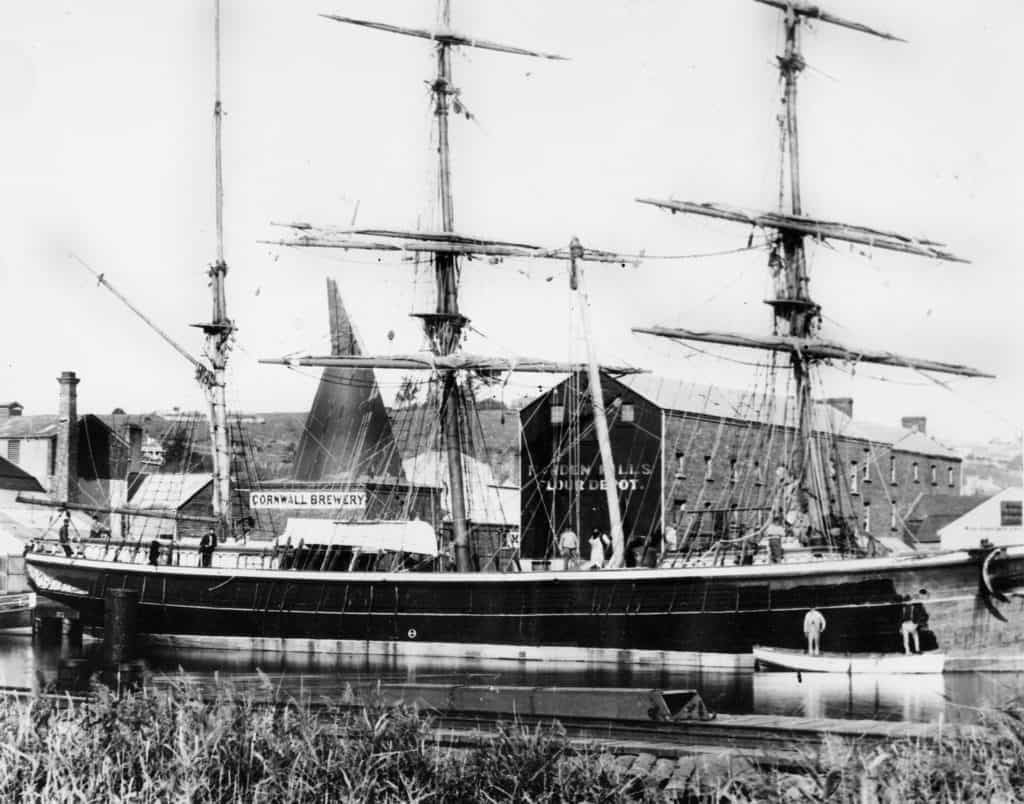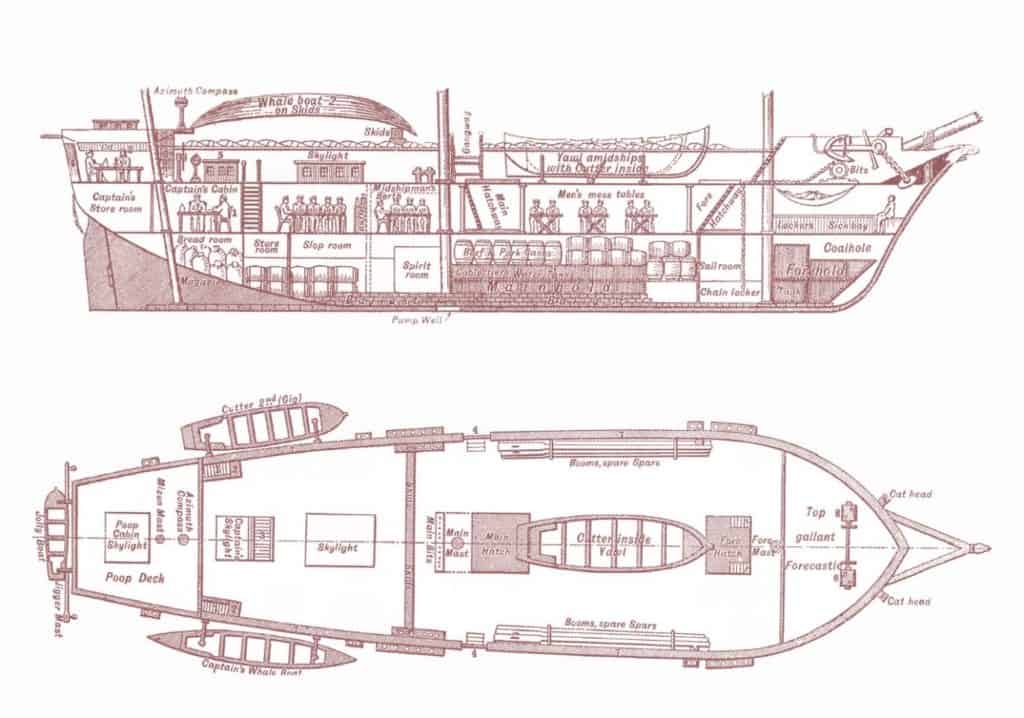A 243 ton barque, the Britomart was built in H.M. Dockyard in Hobart in 1808. On the 15th of December 1839 she sailed from Melbourne to Hobart with a cargo of livestock, seven passengers and twenty-three crew and was never seen again. Almost immediately rumours began to circulate that she had been the victim of pirates who had run her into the rocks off Preservation Island. It did not take long before suspicion fell on local sealers. Wreckage, the ship’s logbook and compass, and personal items from the ship were reported as being in the possession of people on various Bass Strait Islands and sealers were said to be flush with cash.

When initially questioned, sealers on Preservation Island claimed that while a vessel had been driven onto the island at night, they knew nothing and had never seen any survivors, only wreckage. It would seem that knowledge of wreckage could hardly be denied, as part of the cabin of the Britomart was observed being used as a pig hut.
A Government Agent of Preservation Island, James Munro, wrote to the Port Officer at Hobart in January 1840 that letters and newspapers from the Britomart had been washed ashore on Preservation Island towards the end of December 1839. He also said that wreckage had washed up on the shores of various nearby islands. At around the same time an inhabitant of Flinders Island, Malcolm Smith, wrote to the Colonial Secretary of Hobart that a trunk containing documents had been found at Preservation Island, along with wreckage and sheep carcasses.

The Colonial Times of 21st January 1840 printed an article outlining the letter from Captain Munro and also stating that part of two boats had been found on the beach of Goose Island, along with carcases of several sheep and a water cask with “Britomart” marked on it. From this the newspaper drew the conclusion that the master and others of the Britomart had taken to the long boat with important papers, as well as sheep and water so that survivors could sustain themselves if they landed in an uninhabited spot, and been swamped.
Captain Watt, master of the Blossom, reported that he had seen lights on Clarke Island, and it was suggested that these may have come from survivors of the Britomart. In January 1840 the government cutter Vansittart was sent out to search for the survivors but on the 7th February1840 it was reported to the Colonial Secretary that the Vansittart had been unsuccessful in her search.
Bad feeling towards sealers continued to grow and amongst the general populace it was strongly suspected that pockets of ex-sealer pirates infested the islands in Bass Strait, the Britomart being just another example of a ship falling victim to their foul play. The fact that a sealer on Preservation Island was found to have books and papers from the Britomart in his possession and initially failed to mention it when questioned may have rung some alarm bells. However, claims that sealers visiting Launceston were in possession of more money than normal and that this came from Britomart plunder is no more than hearsay.
Rumours and hearsay continued to grow, with claims of a drunk sealer boasting he knew where the wreck of the Britomart was and would reveal it if paid enough. Other claims were made that a boom with sails furled to it belonging to the Britomart had been seen in the possession of some sealers, while another sealer was reported as having cheques in his possession. As rumours continued to grow it appears that many began to believe that, if not initially attacked by sealers, the Britomart’s wreck had been plundered by them and her survivors massacred.
The rumours about piracy would not die down. In 1933 the Daily Telegraph printed an article in which they linked sealers and runaway convicts to piracy and specifically to the Britomart. The article claimed that as early as 1803 escaped convicts were intending to seize a vessel in the Straits, while in 1807 a band of convicts did actually seize a 26-ton schooner. However, the article does admit that in the incident in 1803 sealers on Cape Barren Island marooned the convicts on Penguin Island, while in 1807 Cape Barren sealers re-took the schooner initially seized by the escaped convicts. The latter group of convicts-turned-pirates were sent to Sydney and sentenced to death. From these two incidents one might infer that while some sealers may have concealed property and used it for their own ends in the case of the Britomart, sealers in the main were on the side of law and order. Alternatively, it could be suggested that they simply didn’t appreciate outsiders muscling in on their lucrative side trade.
Ultimately, as no official enquiry was held, none of the rumours were looked into. The most that can be said with any degree of certainty is that if wreckage from the Britomart began to drift onshore it is natural that items would be picked up and used or kept by the islanders. The true fate of the Britomart and her crew and passengers may never be known.
References:
The Colonial Times, Tuesday 21st January 1840
The Critic, Saturday 16th September 1911
The Daily Telegraph, Saturday 7th January 1933
The Mercury, Monday 29th October 1928
Australasian Underwater Cultural Heritage Database, located at www.environment.gov.au
Australian National Shipwrecks Database, www.wrecksite.eu/wreck.aspx?54251

